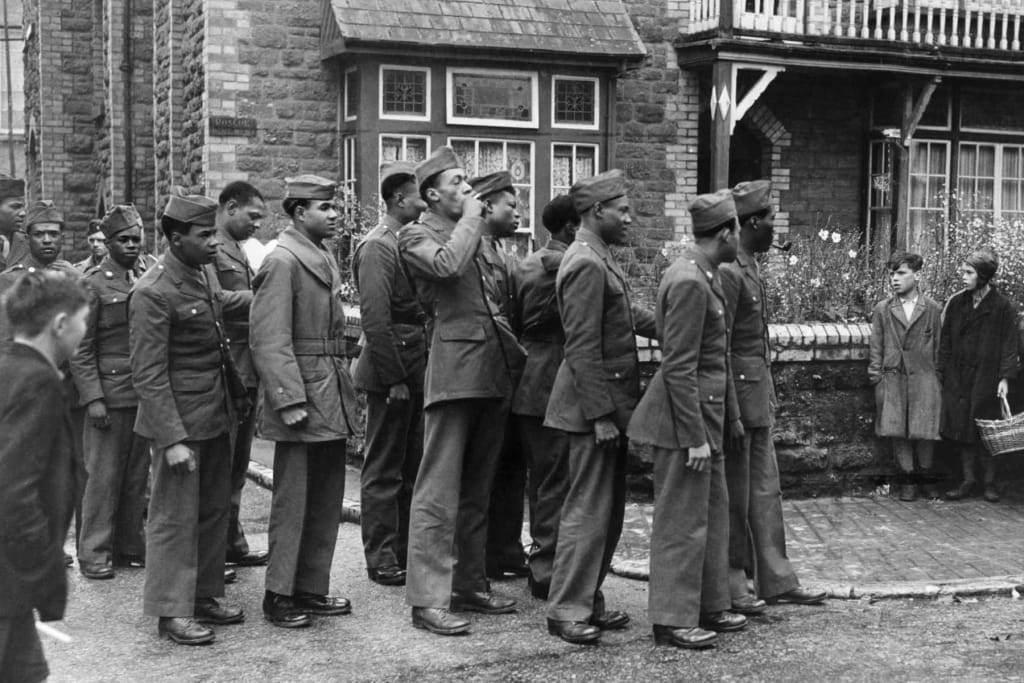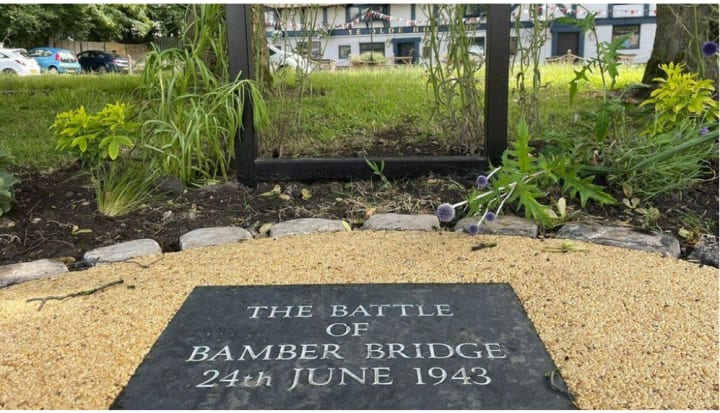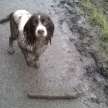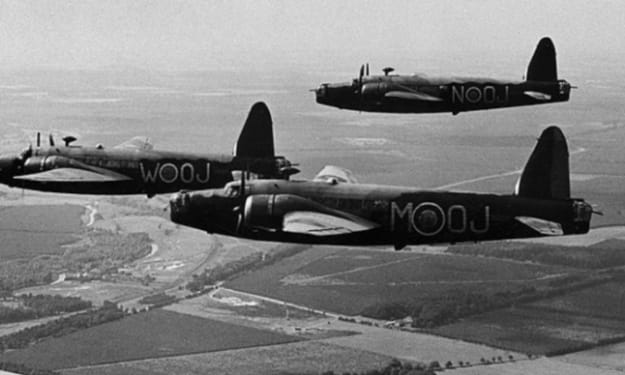The Battle Of Bamber Bridge
Racial Violence In WW2 Britain

The Battle of Bamber Bridge took place in the village of Bamber Bridge, just south of Preston in Lancashire on the 24th June 1943. The incident, an outbreak of racial violence between black and white American servicemen, occurred a few days after the 1943 Detroit Race Riot in America. It began when white American Military Police (MPs) attempted to arrest several black American soldiers, from the 1511th Quartermaster Truck Regiment, while they were drinking at Ye Olde Hob Inn public house.
During the Second World War, Bamber Bridge played host to American servicemen from the 1511th. From their base on Mounsey Road, they delivered supplies to US Air Force bases around Lancashire. A US Military Police company were also based on the north side of the town.
At this time, the US Army was still racially segregated, and the soldiers of 1511 Quartermaster Truck were almost entirely black. Conversely, all but one of the officers were white, as were all the military policemen. Military commanders tended to treat service units, like the 1511, as dumping grounds for less competent officers. For this reason, the leadership of the unit was rather poor. Racial tensions had been exacerbated by the race riots, earlier that week, in Detroit. The riots, caused by a combination of population explosion and poor housing, had led to 34 deaths in the city, of which 25 were black. The people of Bamber Bridge very much liked and supported their black troops. When US commanders demanded a colour bar in the town, all three pubs reportedly posted "Black Troops Only" signs in their windows.
On the evening of 24th June, some soldiers from the 1511th were drinking with the locals in Ye Olde Hob Inn. Two military policemen entered the pub, responding to a report that there had been some trouble. The MPs had standing orders to arrest any soldiers who were out of camp without a pass, were not in proper uniform or were in any way disorderly. As they entered the pub, they saw that one soldier, Private Eugene Nunn, was dressed in a field jacket, rather than the required Class A uniform. The MPs asked Nunn to step outside. An argument ensued, with local people and British servicewomen of the Auxiliary Territorial Service siding with Nunn. One British soldier challenged the MPs, saying, "Why do you want to arrest them? They're not doing anything or bothering anybody."
Staff Sergeant William Byrd, the only black officer present, defused the situation and the MPs made to leave. However, before they reached their vehicle, a glass of beer was thrown at their jeep. The MPs departed, but only to pick up reinforcements and speak to their commanding officers, who told them to do their duty and arrest the black soldiers.
Thus reinforced, a group of MPs intercepted the soldiers on Station Road, as they were returning to their base on Mounsey Road. As the MPs attempted to arrest the soldiers, a fight broke out in the street, leading to the MPs shooting at the black soldiers. One bullet struck Private William Crossland in the back, and he was killed instantly.
Some of the black troops, including some of the injured, returned to their base. Stories of the killing of Crossland caused panic throughout the camp, as rumours began to spread that the MPs were out to shoot black soldiers. With their commander absent, acting Commanding Officer Major Heris did his best to calm the situation. Lieutenant Jones, the unit's only black officer, managed to persuade the soldiers that Heris would be able to round up the MPs and see that justice was done.
However, at midnight, several jeeps full of MPs arrived at the camp, including one armed with a large machine gun. That prompted black soldiers to raid the camp stores and arm themselves with weapons. Around two thirds of the camp’s rifles were taken, and a large group left the base in pursuit of the MPs. British police officers reported that the MPs set up a roadblock, in an attempt to ambush the soldiers.
When confronted with the roadblock, fighting broke out between the troops and the MPs. Due to their good relationship with the people of Bamber Bridge, the black soldiers shouted warnings to the locals to stay inside and away from their windows. As a result of the ambush, seven soldiers were wounded. Gunfire finally ceased around 4am, with an officer, three black soldiers, and one MP having been shot and two other MPs displaying signs of being beaten. Eventually, the soldiers returned to their base and, by the afternoon, all but four rifles had been returned.
Following the incident, two court martial trials were conducted. In August, four of the black soldiers involved in the initial brawl were sentenced to hard labour. One soldier was sentenced to two and a half years and all the other soldiers to three years. All the troops were dishonourably discharged, though one of the convictions was overturned on review.
A second trial, involving 35 defendants, concluded on the 18th September with 28 convictions and seven acquittals. Sentences for those convicted ranged from three months to 15 years, with seven sentences of 12 years or more. When the sentences were later reviewed, one soldier was released, and all the other sentences were reduced.
Fifteen of the men returned to their military duties in June 1944 and six other soldiers had their sentences further reduced. The defendant with the longest sentence returned to duty after serving only 13 months.
General Eaker, commander of the US Eighth Air Force, placed most of the blame for the violence on the white officers and military police because of their poor leadership and use of racial slurs. To prevent similar incidents happening again, he combined all of the trucking units, including the 1511th, into one single special command. The ranks of that command were purged of inexperienced or racist officers, and the MP patrols were racially integrated.
Morale among black troops stationed in England began to improve and the rates of courts-martial fell. Although there were several more racial incidents between black and white American troops in Britain during the war, none were on the scale of the Battle of Bamber Bridge.

About the Creator
Niall James Bradley
I am a teacher who lives in the north west of England. I write about many subjects, but mainly I write non-fiction about things that interest me, fiction about what comes into my head and poetry about how I feel.
Reader insights
Outstanding
Excellent work. Looking forward to reading more!
Top insights
Compelling and original writing
Creative use of language & vocab
Easy to read and follow
Well-structured & engaging content
Excellent storytelling
Original narrative & well developed characters
Expert insights and opinions
Arguments were carefully researched and presented
Eye opening
Niche topic & fresh perspectives
Heartfelt and relatable
The story invoked strong personal emotions
On-point and relevant
Writing reflected the title & theme






Comments (1)
This was a very interesting and informative read